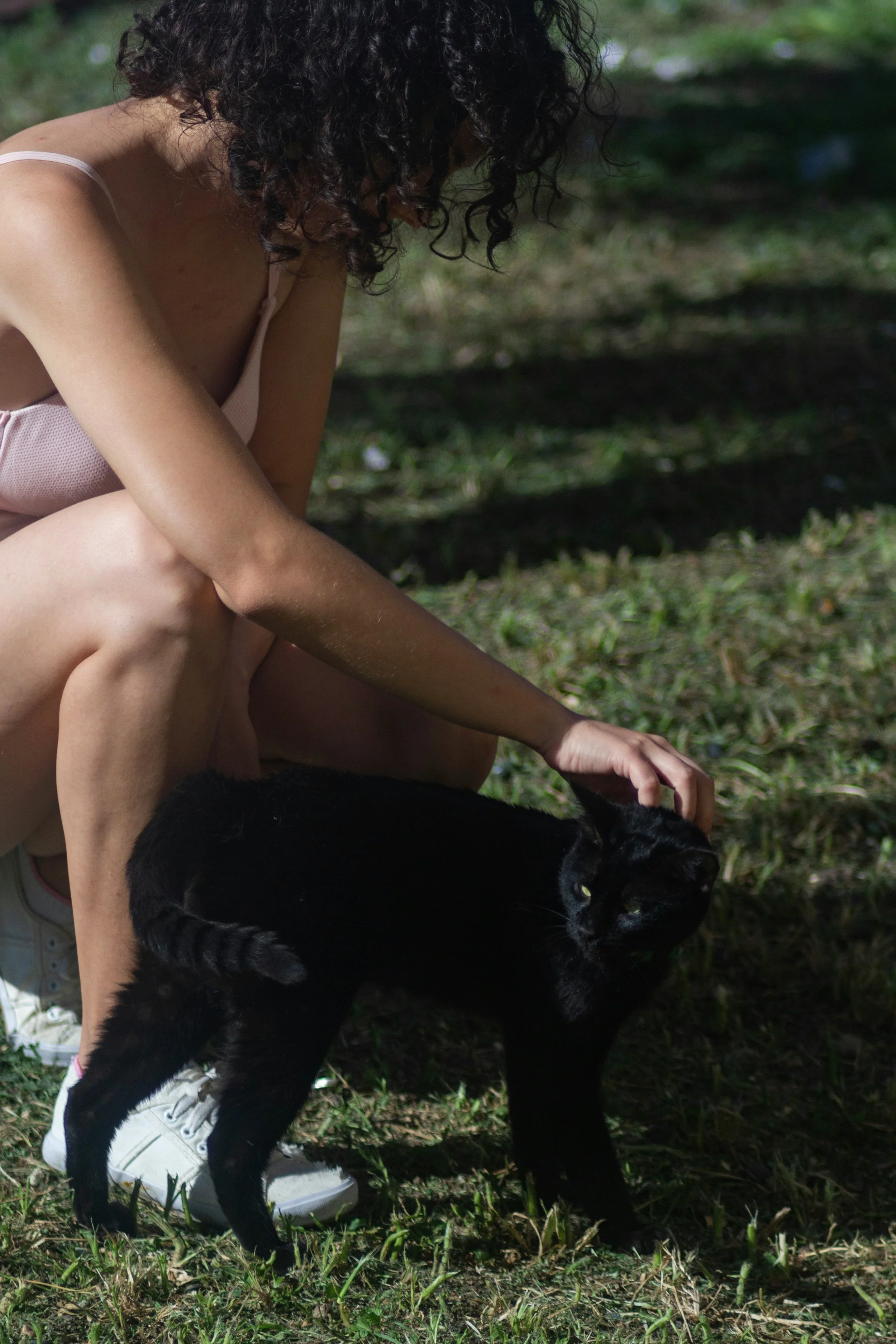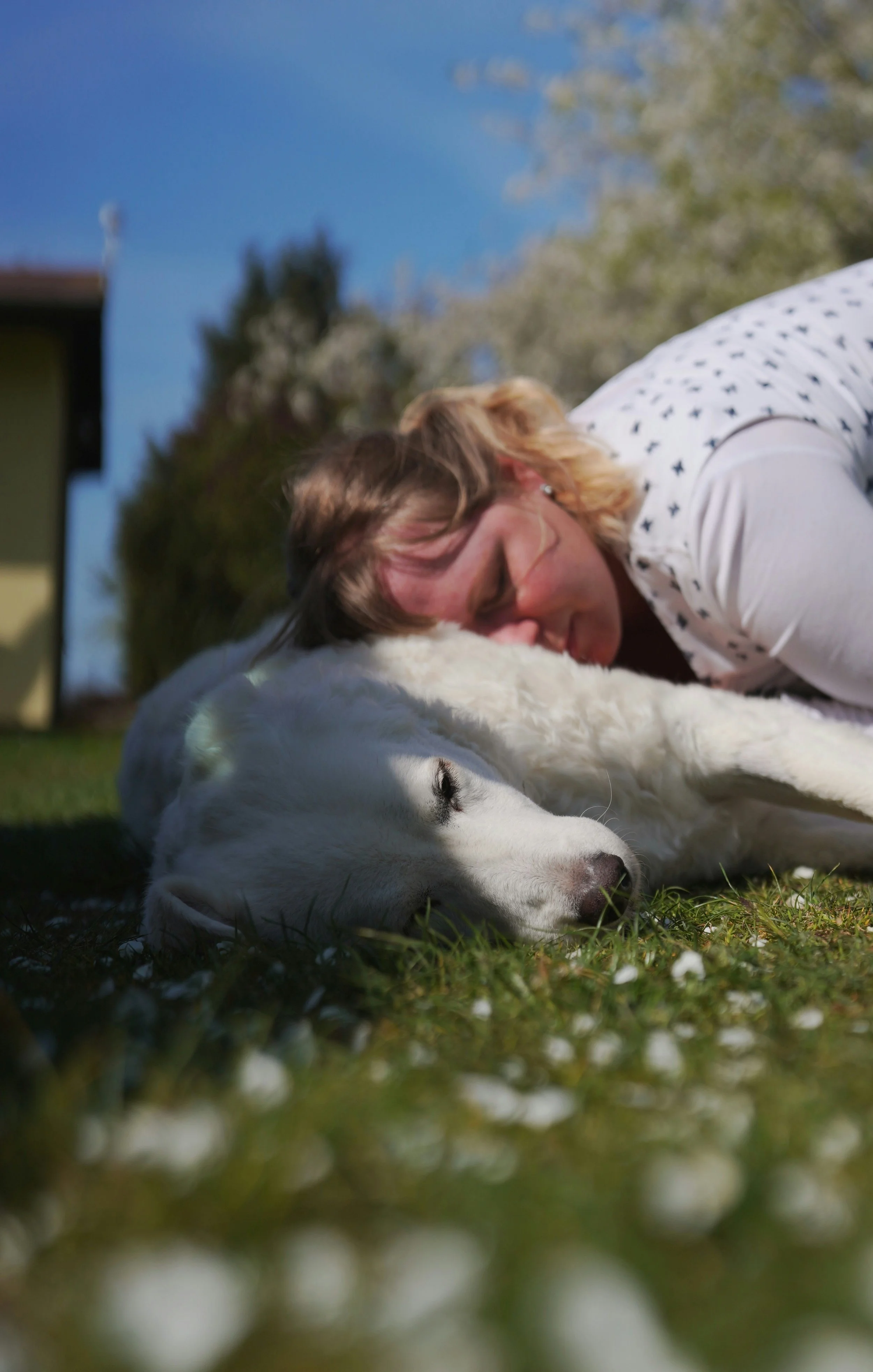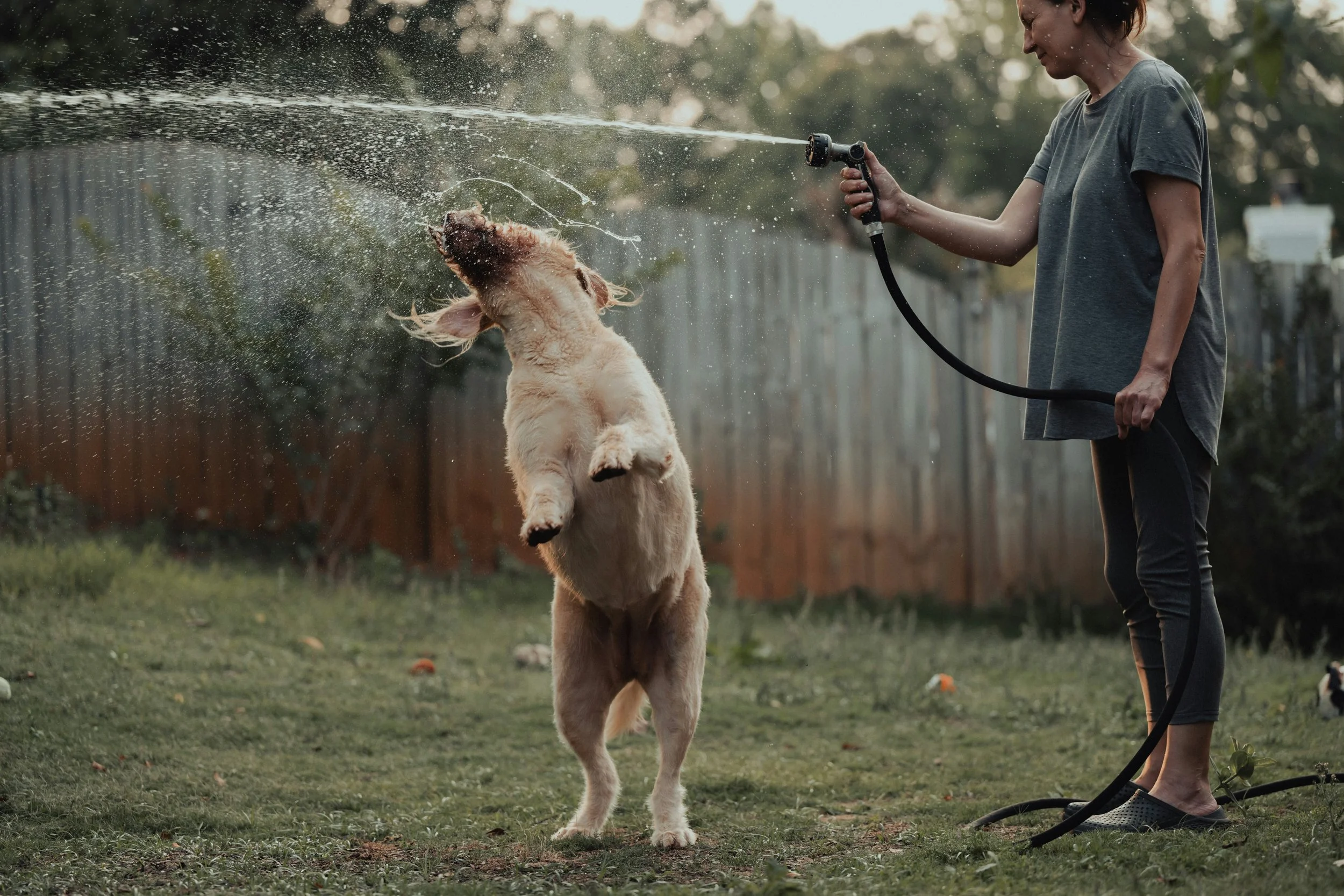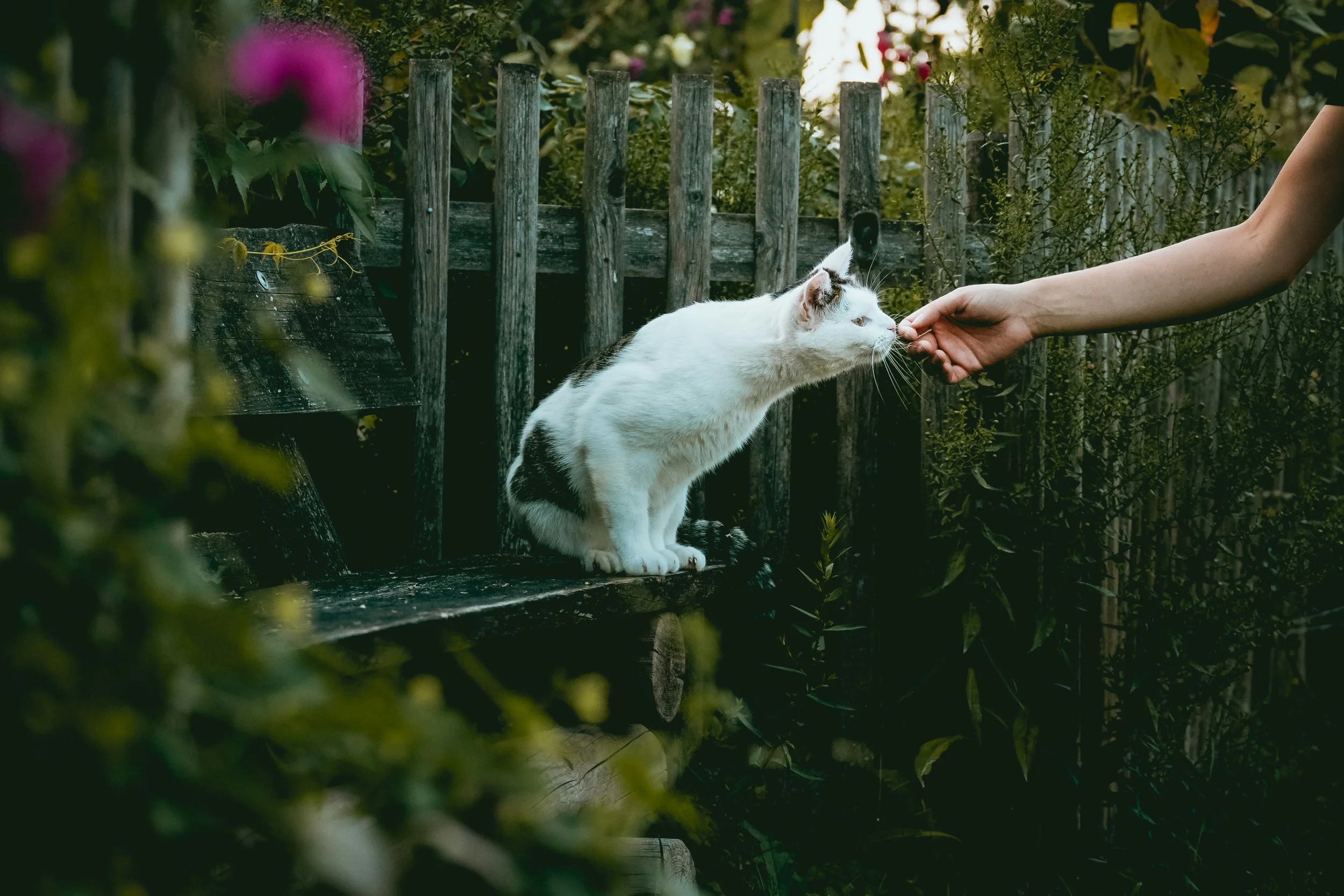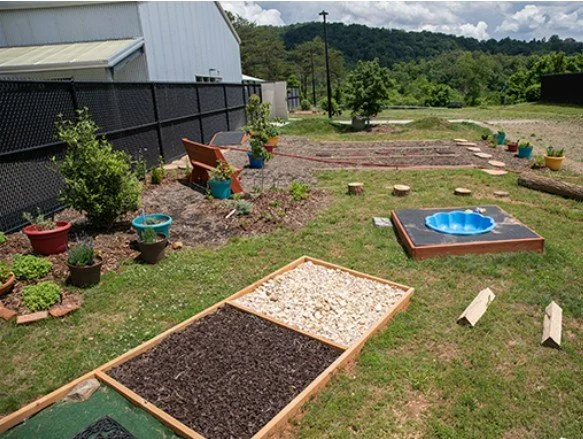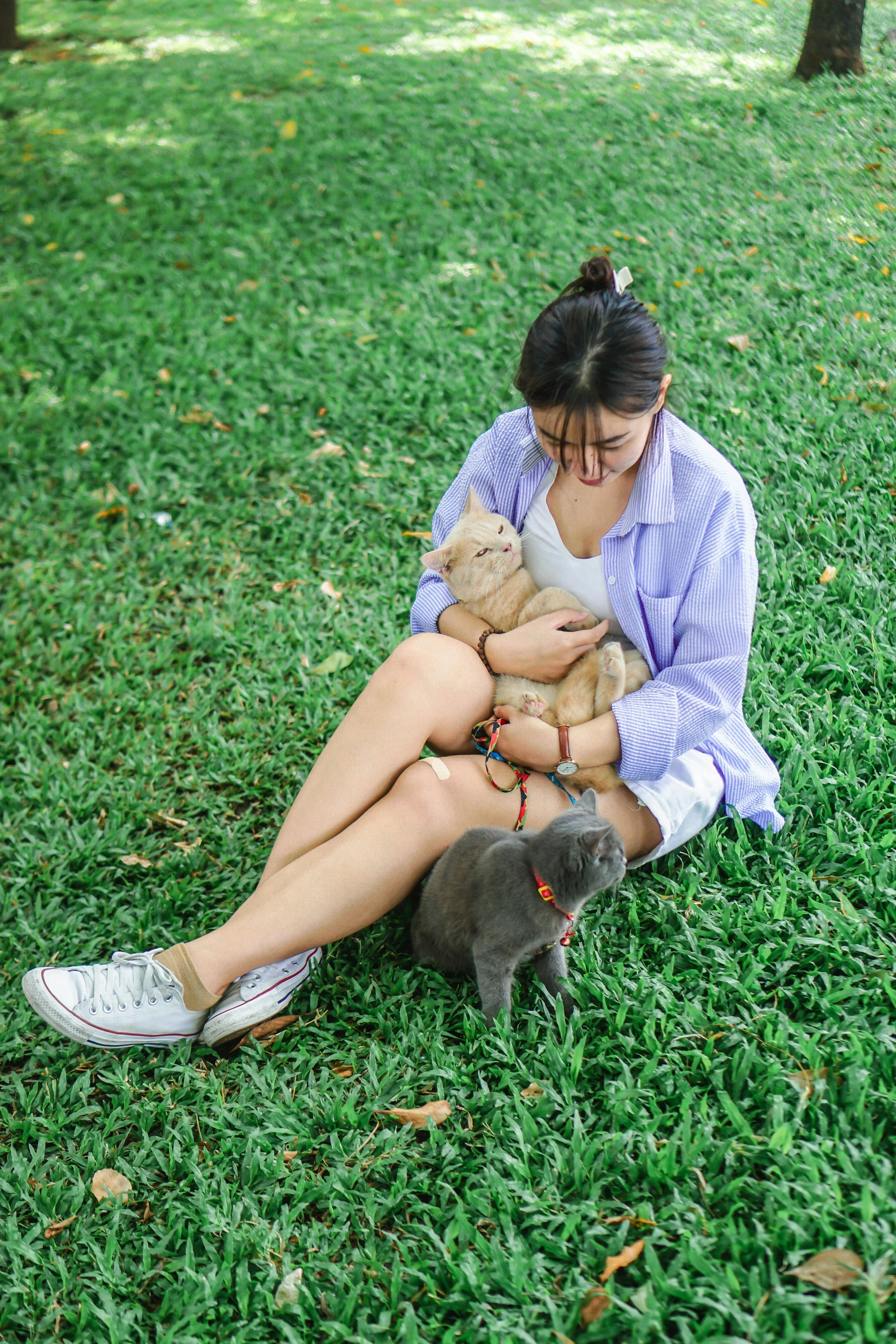Is The Lawn Safe For Your Pet?
Keep them safe when it’s time to play outside
There’s nothing quite like the excitement of a pet who gets to roll around in the grass on a warm summer morning.
Pair that with sunny afternoons spent in the shade of a tall tree or jumping through refreshing cold water from the hose…
It sounds like the perfect way to spend a day outside making memories with your pet!
But if we’re not careful, the very place we spend so much time together can actually contain a handful of unseen dangers.
Have you ever thought about how safe your yard really is for them?
What’s lurking in the lawn?
When you start to think about what could be harmful in the yard, it’s likely your mind goes straight to chemicals, like herbicides or pesticides. While they’re some of the heavy hitters, they’re not the only things to look out for.
Lawn treatments
Keeping the lawn luscious and free of pests means your pet gets a soft, bite-free zone to play in. Sounds pretty ideal to us!
But choosing chemical products to achieve that may end up doing more harm than we think, even if the label says it’s safe. While product instructions vary, it’s common to stay off the grass for a certain number of hours (or even days) while it soaks in or dries up, thus deeming it “safe.” But studies are showing that isn’t really the case.
Here’s an interesting stat we found that’s definitely an eye-opener:
“Exposure to pesticides is widespread. The US Center for Disease Control and Prevention (CDC), in a study of 9,282 people nationwide, found pesticides in 100% of the people who had both blood and urine tested. The average person carried 13 of 23 pesticides tested. We do not have similar data for companion animals, but it is easy to imagine a similar result.” - source
In some cases, what’s put on the lawn is out of our control. In townhouses or apartments with shared green space, or a rental unit controlled by a landlord, we don’t always get to make the choice.
Nearby dangers
Neighbors could also apply something that might not be safe for your pet if they come into contact with it.
That’s exactly what happened to Sue, who nearly lost her dog, Lucy, due to accidental poisoning from the neighbor’s insecticide application. Lucy was losing strength fast, vomiting, and even refusing to drink.
“I looked up Sevin online and discovered the active ingredient was carbaryl. The symptoms of carbaryl poisoning include excessive salivation, vomiting and muscle weakness. I immediately called my vet at home. Could my dog have been poisoned?”
Thankfully, Sue put the pieces together and was able to make sense of Lucy’s sudden, and rapid, decline.
It’s a good reminder that as pet parents, we know what’s normal for our pets. We know their mannerisms and behaviors. If we see something that seems even just a little bit “off,” a call to the vet is always justified. These are our babies, after all!
If chemicals are being used, make sure to wait well beyond the timeframe specified on the label, or find an alternate place to play with your pet in the meantime. Also, make sure bottles are stored in a place where curious mouths can’t get to them.
If you’re in a position to consider natural ways of caring for the lawn or getting rid of pests, those will always be the best bet for you and your pet.
Landscaping
Sometimes, we’re not sure who loves the yard more–the humans, or the pets.
In many cases, we choose to landscape our space to create a little piece of heaven we can go to at any time. Flowerbeds filled with beautiful blooms or shrubs that define the property line can give us a sense of peace and contentment.
But, you guessed it, there are dangers lurking in the landscaping as well. Many of the common plants we love in our yards can actually pose a threat to our pets if ingested. And while some pets want nothing to do with the mysterious bush in the corner, some see it as a tempting treat to munch on when no one is looking.
Landscaping favorites like lilies or daffodils are more common culprits, but the list of harmful plants is actually quite extensive. Not everything will be a threat to their life, but even an upset tummy can be avoided with careful planning.
If you think your pet has eaten a poisonous plant, call your vet or the Pet Poison Helpline (855-764-7661) immediately. They may recommend that you bring your pet to the veterinary hospital right away for treatment.
Oh, and when it comes to mulching the flowerbeds, make sure to choose a wood mulch. Alternatives like cocoa mulch are growing in popularity, but they’re not the best choice when pets are around. Like we keep dogs away from chocolate, do the same with cocoa mulch.
A yard experience designed for pets
Some might think it’s a little crazy to make design decisions based on what a pet would like… but they’re not the ones reading this newsletter 😉
Some suggestions might seem like common sense, but it never hurts to hear it again. Or, it could be something you’ve never thought of!
Like us, dogs and cats will get overheated pretty quickly if there’s no reprieve from the heat. Mature trees provide much-needed shade, but if there’s none around, you can opt for large umbrellas or a sun shade or two.
Sprinklers and kiddie pools are so much fun too. The cold water helps cool their body temperature and hey, you might be tempted to join them!
Also, little things like gaps in a fence, metal landscape edging, or haphazard gardening tools can injure a pet who’s just trying to have a good time.
Gardening with pets in mind
For those growing veggies and other produce, some of your garden favorites are best kept away from pets. Alliums–like onions, garlic, and chives–are the most commonly known toxic foods but even options that are safe can cause issues when eaten in excess.
Make sure curious noses can’t sniff their way right up to the garden beds when unattended. Consider fencing off some parts of the garden where you can grow those tasty treats that are toxic to pets.
And if you love gardening for yourself, why not consider creating a sensory garden just for your pet?
Sensory gardens are a great way to provide an enriching experience and encourage natural behaviors like sniffing, exploring, and playing. This space can be designed with different textured surfaces, built-in puzzles, water features, and various plants that they can eat.
You might even add in some agility-type structures like tunnels, or a special digging pit where they’re allowed to dig to their heart’s content.
The options are endless!
Enjoy the dog days of summer together
Even if your time outside is limited during the heat of the summer, there are still plenty of opportunities to enjoy the fresh air with your pet. And each time you step foot–and paw–outside, it’s the perfect chance to make sure the yard really is a safe space where they can play, explore, and thrive.
The chances that something bad could happen are rare. But even a slight chance is enough for us to consider how we’re showing up for our pets, especially in the spaces we might not have thought of before.
Whether you have a yard of your own or you enjoy a shared space with other neighbors and pets, being mindful of what’s going on in the grass around you means your pet can continue living a healthy, safe life.


